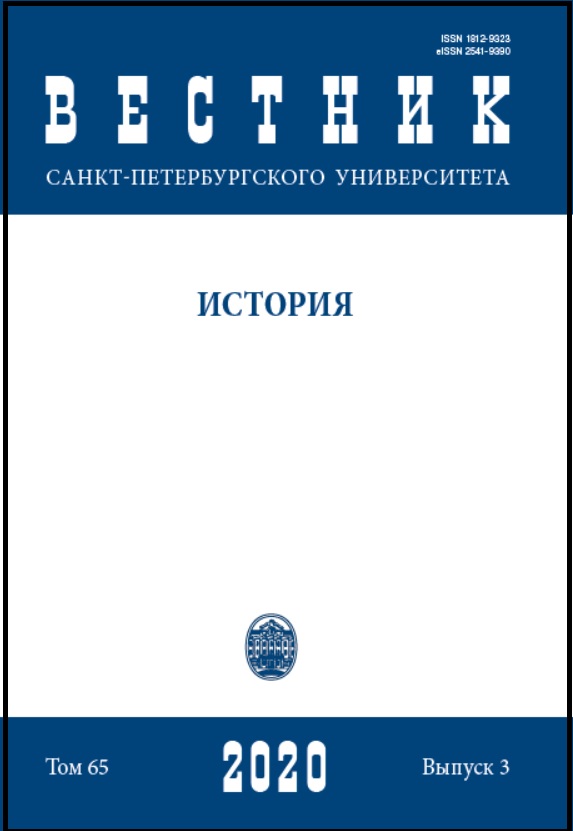A Russian bank in the Khanate of Khiva Novo-Urgenchskiy branch of Russo-Asian commercial bank
DOI:
https://doi.org/10.21638/11701/spbu02.2020.306Abstract
Cotton farming, being one of the leading branches of economic activity of Turkestan of the beginning of the XX century, attracted attention of big investors of the Russian Empire. In the Soviet and contemporary historiography, the interest for operation of the Empire’s banks on the territory of Central Asia has been determined by on-going discussions about the role and importance of Russian capital in the economic development of the region. Not infrequently, representatives of Russian capital on the periphery of the empire had to thoroughly study specifics of the local political situation prior to making any long-term financial decisions. This article considers functioning of the Novo Urgenchskiy branch of the Russo-Asian commercial bank (RACB) in detail on the basis of the material from Russian State Historical Archive (RGIA): successful and unsuccessful operations, organizational structure, interaction with clients, influence on the regional market. The unique character of this branch of one of the largest Russian banks is that it was the only lending and financial institution that expanded its operations throughout the entire oasis of Khiva, including territories that were under control of the khan of Khiva. Both local political and economic elites and entrepreneurs from Central Russia were clients and partners of the Novo Urgenchskiy branch of the bank. Wide-spread liaisons allowed the institution to promptly conquer and maintain, even in the conditions of a crisis, its niche on the market of financial services in Central Asia. On the threshold of the World War I, the bank attempted to monopolize cotton farming, working with big clients and even stimulating development of the processing industry. Novo-Urgenchskiy branch of the Russo-Asian bank provided help to the local merchantry trying to increase export of raw cotton and enter both Russia-wide and international markets. For the objective reasons of shortage of liquid assets, underdeveloped infrastructure of the region, stock-exchange swings and human resources problem, the Novo-Urgenchskiy branch of the Russo-Asian bank could not capture and control the Khivan market. During the war years, the Central Asian periphery was under the influence of the problems characteristic of not only the banking sector, but Russian economy as a whole.
Keywords:
Russian-Asian Commercial Bank, Khanate of Khiva, Turkestan, cotton, alfalfa, Russian Empire
Downloads
Downloads
Published
How to Cite
Issue
Section
License
Articles of "Vestnik of Saint Petersburg University. History" are open access distributed under the terms of the License Agreement with Saint Petersburg State University, which permits to the authors unrestricted distribution and self-archiving free of charge.





